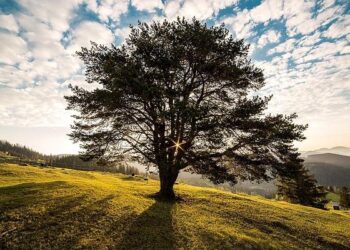Preserving Romania’s Agricultural Legacy: The Future of Monumental Haystacks
Located in Eastern Europe, Romania is home to breathtaking landscapes that showcase a profound agricultural heritage. The iconic giant haystacks are not only remarkable structures made from the region’s rich vegetation but also serve as vital representations of its rural traditions. These extraordinary formations play a crucial role in maintaining the ecological balance of the countryside.However,with modern farming practices increasingly overshadowing these traditional methods,there are growing concerns about the future of these beloved haystacks and their surrounding ecosystems. This article examines the challenges confronting Romania’s agricultural heritage and discusses potential strategies for its preservation amidst contemporary pressures.
Protecting Romania’s Agricultural heritage
The serene landscapes of Romania feature ancient giant haystacks that stand as testaments to the country’s long-standing agricultural practices. constructed from freshly harvested grass, these towering structures symbolize the dedication and customs of rural communities while providing essential habitats for various species. Nevertheless, modern farming techniques pose significant threats to their existence. As farmers increasingly adopt mechanization and monoculture approaches, the intricate ecosystems supported by these iconic formations face serious risks. Historically celebrated for their biodiversity, giant haystacks have nurtured numerous plant and animal species reliant on this distinctive form of agriculture.
In response to this decline, initiatives aimed at preserving these natural treasures are gaining traction through sustainable farming practices that respect local traditions while incorporating innovative solutions. Key strategies include:
- Community Education: Programs designed to educate local farmers about the ecological benefits associated with maintaining giant haystacks.
- Biodiversity Support: Financial incentives for environmentally kind practices that harmonize productivity with conservation efforts.
- Partnerships with Conservation Organizations: Creating conservation corridors aimed at safeguarding these vital structures.
The communities responsible for managing their land now face a critical decision: adapt to modern demands or uphold age-old customs that have sustained them through generations. Recent research conducted by agricultural specialists highlights an urgent need for coordinated efforts focused on sustainable methodologies capable of ensuring both sustainable agriculture and ecological health coexist effectively.
the Importance of Biodiversity in Sustainable Agriculture
The connection between biodiversity and sustainable agriculture is becoming increasingly acknowledged—especially in regions like Romania where traditional methods have coexisted harmoniously with natural environments over centuries. Sustainable agriculture relies not solely on crop yields but also on diverse species contributing positively to soil health, pest management, and pollination processes. The ancient giant haystacks exemplify this relationship; they host countless plant and animal species essential for both ecosystem stability and economic viability within agrarian communities. By promoting biodiversity-rich environments through traditional farming techniques, resilience against climate change impacts can be bolstered while preserving cultural legacies.
The integration of biodiversity into farming systems provides numerous advantages such as:
- Nutrient-Dense Soil: A variety of crops enhances soil vitality by fostering microbial activity necessary for nutrient cycling.
- Pest management Solutions: Diverse predatory species naturally regulate pest populations without heavy reliance on chemical interventions.
- Pollinator Attraction: Biodiverse settings attract essential pollinators which substantially improve crop yield quality.
Agriculture must evolve alongside environmental considerations; nurturing such practices is crucial not only for protecting romania’s iconic giant haystacks but also ensuring broader ecosystem health supporting local agrarian societies.This strategic focus on biodiversity addresses immediate challenges while contributing globally toward achieving sustainable growth goals without compromising regional heritage values.
Innovative Approaches Merging Tradition With Modernity in Romanian Agriculture
The landscape of Romanian agriculture presents an intriguing fusion shaped by centuries-old traditions contrasted against contemporary demands.
Giant haystacks embody rural identity yet risk becoming casualties amid rising industrialized farming trends.
To effectively safeguard these cultural icons,
farmers are increasingly adopting innovative strategies that blend time-honored techniques with advanced technologies.
Some noteworthy initiatives include:
- Sustainable Agroecological Practices: Implementing organic methodologies enhances soil quality while reducing chemical usage across farms.
<!– Add more list items here if needed –>
</section>
<p></section>
<p></section>
<p></section>















